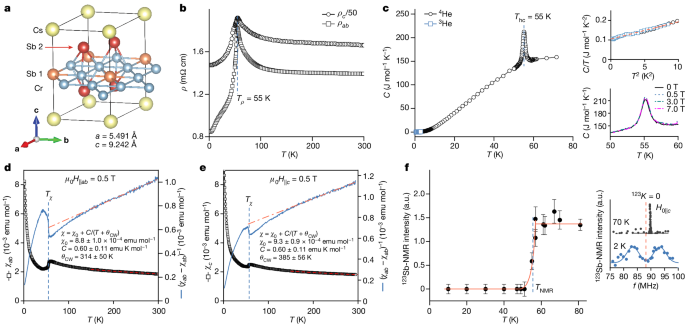Discovery of Superconductivity in a Strongly Correlated Chromium-Based Kagome Metal under High Pressure
The article reports the discovery of a chromium-based kagome metal, CsCr3Sb5, which exhibits strong electron correlations, frustrated magnetism, and flat bands near the Fermi level. Under ambient pressure, the material undergoes a concurrent structural and magnetic phase transition at 55 K, with a stripe-like 4a0 structural modulation.
At high pressure, the phase transition evolves into two transitions, possibly associated with charge-density-wave and antiferromagnetic spin-density-wave orderings. These density-wave-like orders are gradually suppressed with increasing pressure, and remarkably, a superconducting dome emerges at 3.65-8.0 GPa. The maximum superconducting transition temperature, Tcmax = 6.4 K, is observed when the density-wave-like orders are completely suppressed at 4.2 GPa, and the normal state exhibits a non-Fermi-liquid behavior, reminiscent of unconventional superconductivity and quantum criticality in iron-based superconductors.
The authors suggest that this chromium-based kagome metal offers an unprecedented platform for investigating superconductivity in correlated kagome systems, which has been theoretically proposed but experimentally challenging to achieve.
客製化摘要
使用 AI 重寫
產生引用格式
翻譯原文
翻譯成其他語言
產生心智圖
從原文內容
前往原文
www.nature.com
Superconductivity under pressure in a chromium-based kagome metal - Nature
從以下內容提煉的關鍵洞見
by Yi Liu,Zi-Yi... 於 www.nature.com 08-28-2024
https://www.nature.com/articles/s41586-024-07761-x
深入探究
